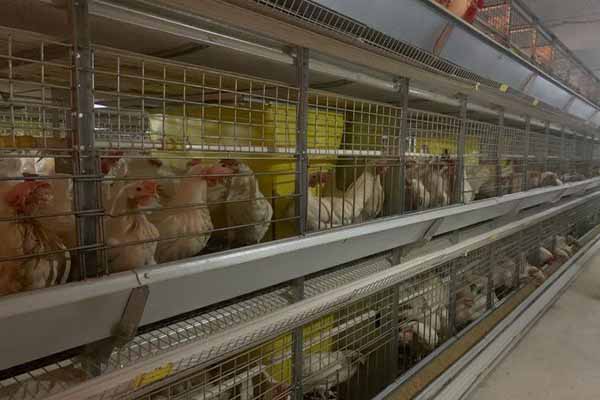How to Start a Small Chicken Farm at Home: A Comprehensive Guide
Time : 2025-06-28
Starting a small chicken farm at home can be a rewarding endeavor, providing fresh eggs, a source of income, and a hobby that brings joy to many. Whether you’re looking to supplement your family’s diet or start a small business, this guide will walk you through the essential steps to get your home-based chicken farm up and running.
1. Planning Your Small Chicken Farm
Before you dive into the world of poultry farming, it’s crucial to plan your venture carefully.
1.1 Determine Your Goals
Identify what you want to achieve with your chicken farm. Are you aiming for a sustainable source of eggs for your family, or do you plan to sell eggs and meat? Your goals will influence the size of your farm, the breeds of chickens you choose, and the equipment you’ll need.
1.2 Research Local Regulations
Before starting your chicken farm, research local zoning laws and regulations. Some areas have restrictions on the number of chickens allowed, or specific requirements for coops and fencing. Failure to comply with these regulations can lead to fines or the need to relocate your farm.
1.3 Choose the Right Location
Select a location on your property that provides ample space for your chickens to roam and for the coop and equipment. The area should be well-drained, protected from prevailing winds, and have access to a reliable water source.
2. Designing Your Coop
The coop is the home for your chickens and should be designed with their comfort and safety in mind.
2.1 Size and Layout
Calculate the size of your coop based on the number of chickens you plan to keep. As a general rule, provide 3 to 4 square feet of space per chicken. Include space for nesting boxes, feeders, waterers, and roosting bars.
2.2 Materials and Construction
Choose materials that are durable and weather-resistant. Wood is a popular choice for constructing coops, but ensure it is treated to resist rot and pests. The roof should be sloped to allow for rainwater runoff, and the walls should be high enough to prevent predators from climbing in.
2.3 Ventilation and Temperature Control
Good ventilation is essential to keep your chickens healthy. Install vents at the top of the coop to allow for air exchange, but ensure they are covered to prevent predators from entering. Consider insulation and a heat source for colder climates.
3. Selecting Chicken Breeds
The breed of chickens you choose will depend on your goals, climate, and the type of care you’re willing to provide.
3.1 Layers for Eggs
For egg production, breeds like the Rhode Island Red, White Leghorn, and Wyandotte are popular choices. They are known for their high egg-laying capacity and adaptability to various climates.
3.2 Meat Birds
For meat production, consider breeds like the Cornish Cross or the Plymouth Rock. These birds are bred for rapid growth and tend to have a better flavor than heritage breeds.

3.3 Dual-Purpose Breeds
For a mix of egg-laying and meat production, breeds like the Barred Rock or the Delaware can be a good choice. They are adaptable, hardy, and can provide both eggs and meat.
4. Equipment and Supplies
Equipping your chicken farm with the right tools and supplies is essential for the health and productivity of your flock.
4.1 Feeders and Waterers
Invest in sturdy, durable feeders and waterers. Automatic feeders can save time and ensure your chickens always have access to food and water. Waterers should be designed to prevent spillage and freezing in cold weather.
4.2 Bedding Material
Choose a bedding material that is comfortable for your chickens and easy to clean. Straw, wood shavings, and pine shavings are common choices.
4.3 Health Supplies
Keep a first-aid kit for chickens, including medication for common ailments, a thermometer, and a scale for weighing your birds. It’s also important to have a veterinarian who specializes in poultry care.
5. Maintenance and Care
Regular maintenance and proper care are essential for the health and longevity of your chickens.
5.1 Feeding and Watering
Provide a balanced diet that meets the nutritional needs of your chickens. Fresh water should be available at all times, and feeders should be cleaned regularly to prevent spoilage.
5.2 Health Monitoring
Regularly check your chickens for signs of illness, such as changes in appetite, feather quality, or respiratory problems. Early detection and treatment can prevent serious health issues.
5.3 Cleaning and Sanitation
Keep your coop clean and free of waste. Regularly remove soiled bedding and clean the coop to prevent the buildup of harmful bacteria and parasites.

6. Marketing Your Products
Once you have a productive flock, you’ll need to figure out how to market your eggs and meat.
6.1 Direct Sales
Sell directly to customers through a farm stand, farmers’ market, or by taking orders online. This method gives you the most control over pricing and customer service.
6.2 Wholesale and Distributors
If you have a larger scale operation, consider selling to local restaurants, grocery stores, or distributors. This can open up new markets and increase your revenue potential.

Conclusion
Starting a small chicken farm at home requires careful planning, dedication, and a passion for poultry farming. By following this guide, you’ll be well on your way to creating a successful and sustainable operation that can provide eggs, meat, and a sense of fulfillment for years to come.











